
Confession of an Art Director: Occult Advertising Tech
- December 31, 2016
- 1
The appeal of ceremonial magick and the occult works for me along two planks, or more aptly, two pillars. One the one hand it addresses my metaphysical yearnings and on the other it compliments my artistic or creative nature.
As it happens, I had been practicing a form of magick long before I realized it as such. You see I work in the revered and despised business of advertising. The big brains in the field keep trying to rename the profession to recapture the mystique it once had in days gone by. Or to avoid the increasing stink associated with the ubiquitous annoyance of “ads.”
Today, they call it content. Who knows what it will be next year. Whether by means of time-tested mass-market retail promotions or targeted infotainment content creation, the end goal is still the same. Access and influence.
I was lured into the craft in the way that most of my colleagues were, with the promise of a steady paycheck (to pay off our massive student debts) while fooling around being “creative” all day. And all night, quite frankly. But hey, they promised me it would be good, dirty fun.
Being paid to exercise my creativity was all I really wanted out of life as an early 20-something. Upon securing my first position, I felt as though I had beaten the game. There was a feeling that I had successfully hacked my life and perfectly situated myself for satisfaction optimization. Forget that I had really wanted to be a filmmaker or an author. Those ambitions seemed unreasonable and risky back then, as I already made the internal deal with myself to comprise dangerous art for safe creativity.
(The more time that has gone by, the more I realize that those compromises are what the film and music industries have always been built on.)
At the time I really did and still do have an affinity for the graphic designer archetype. I was fully aware of the creative power that typography and manipulated photographs had on my entire life. Everything that I loved came with a branded package and visual identity. Films, music, toys, comics, etc.
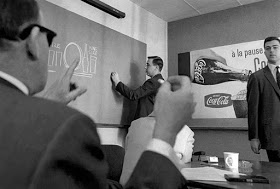
My grasp on the esoteric power of symbolism encoded with meaning and association was not fully formed at the onset. Though I knew full well about blatant propaganda art, which I came upon in design school. I just didn’t fully appreciate how subtle propaganda could become when better disguised. In fact, the sexy allure of a sophisticated image seemed not only purposeful but also necessary – if only to make up for the crude and truly obnoxious communications out in the world. Maybe I could help make the crap better, I thought.
It’s funny in a way because I recall that as a graphic design student, one of my fascinations was focused on Soviet and fascist propaganda posters. More precisely, a fascination with Nazi propaganda. One entire project I self-assigned was dedicated to breaking it down and reinterpreting it. I most certainly was captivated by the Russian Constructivist movement and Italy’s Futurism style. I consider the Soviet and Italian designers far in advance of the official German artists for their graphic innovations and avant-garde compositions.
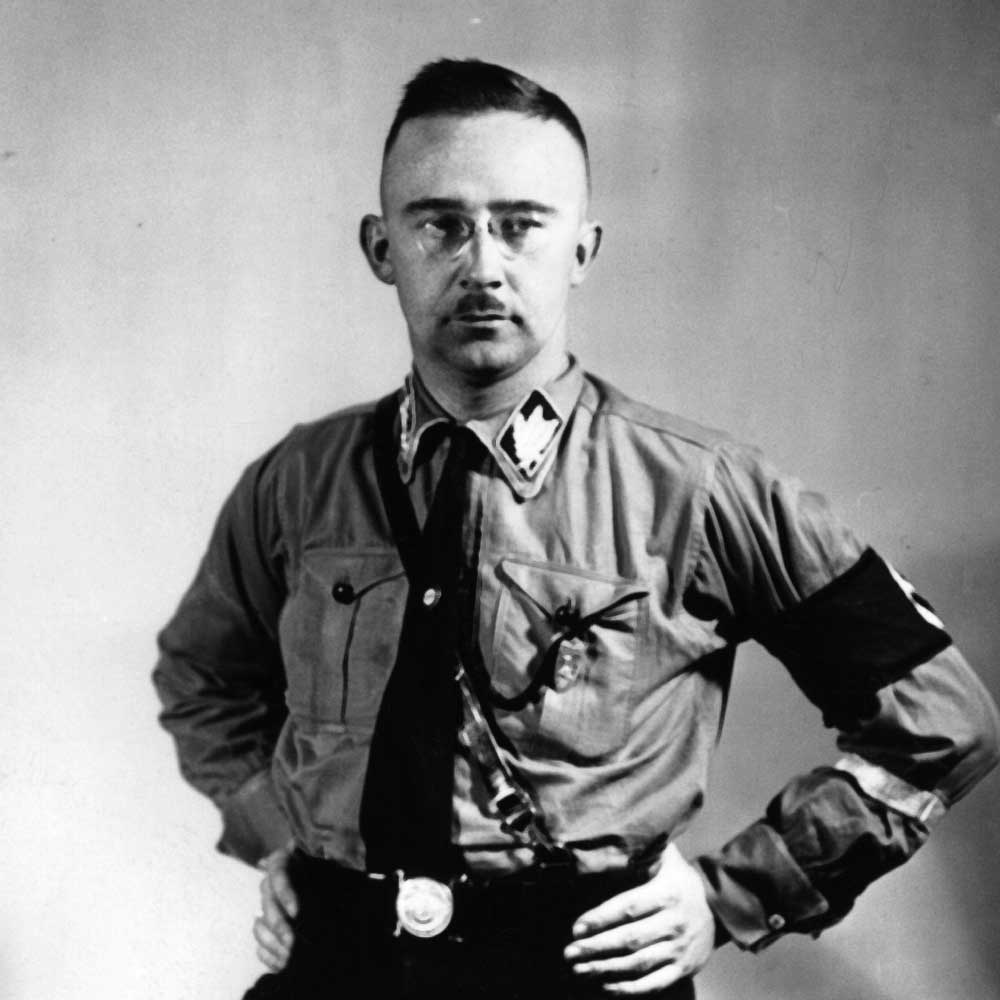
Yet, for reasons I didn’t fully understand, it was the Nazi advertising that struck a really ominous and dark chord with me. The work was like a crime scene that I couldn’t look away from.
Everyone familiar with sorcery understands the explicit use of occulted symbolism employed by the Nazis under the influence of Joseph Goebbels and Heinrich Himmler. For me it wasn’t until years later that my study of the occult brought the Nazi history back to me. I knew nothing substantive about the occult growing up even though I was immersed in it indirectly. Surprisingly or not, occult symbolism was never explained to me in any design class.

My reaction to those taboo German posters was quite irrational, visceral and immediate. The images worked, regardless of my complete opposition and repulsion towards the actual ideology represented. It’s quite possible the element of taboo was part of the operative magick, still resonant, all those decades past their shelf life. I was captivated and hypnotized by the powerful graphics set in potently harsh colors with type set in gothic Fraktur.
 Could it be that the academics in design education not understand the mystical possibilities of pictograms? It may be a matter of terms. As in, a reluctance to acknowledge the magick nature of embedding meaning into symbol sets, and a preference to use the respectably modern term – psychology. Design professionals will forever speak of psychology and the ability to subconsciously make suggestions. But magic? The occult? That’s not intellectual enough. Not rational enough.
Could it be that the academics in design education not understand the mystical possibilities of pictograms? It may be a matter of terms. As in, a reluctance to acknowledge the magick nature of embedding meaning into symbol sets, and a preference to use the respectably modern term – psychology. Design professionals will forever speak of psychology and the ability to subconsciously make suggestions. But magic? The occult? That’s not intellectual enough. Not rational enough.
I can only imagine a time when the idealistic propaganda was seeded on a public still blinded to the worst implications of Übermensch nationalism. A public desperate for self-assurance and confidence after suffering economic and political humiliation following WWI. For hypnosis to really work, I think the subject has to need or want to believe.
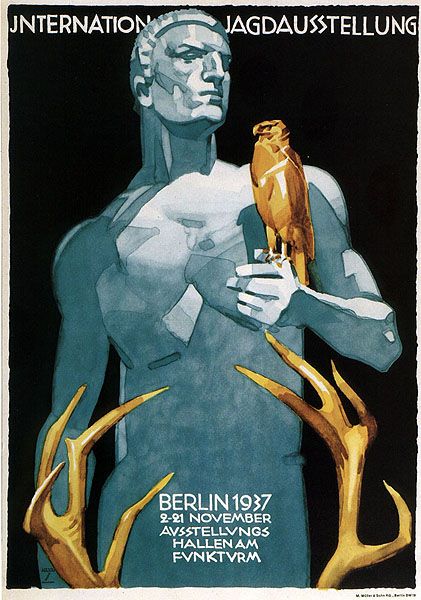
Under Hitler, the Nazi visual communications program was under mandate to resurrect a classical pictorial realism to their art. Realism infused with the style of heroic idealism that set the standard for dominant cultures like Greece and Rome. Every depiction of a soldier or a citizen took on the look of a sculpted Greek God. Symbolic eagles and Teutonic Knights were employed to dramatic effect.
This brings to mind high-end luxury fashion advertisements; representative of ultra-superficiality and vanity but that does not fail to entrance even a guarded viewer.
That is the seductive power of images – they work outside of rigorous logic, bypassing their way straight into our emotionally driven subconscious. The most effective images speak to our primal instincts.
Sex. Strength. Control. Order. Desire. Satisfaction. Victory.
“The design and marketing methods used to inculcate doctrine and guarantee consumption are fundamentally similar.” –Steven Heller, design historian, author and critic
The power of magic works very much along the same lines as artistic works. A principle difference being that the occultist intentionally creates scenarios in which they make themselves susceptible to forces of influence. The use of intricate symbols and archetypes during ritual and meditation bypasses the iron doorways of the rational and critical mind to gain entry into the subconscious. Through a form of self-suggestion and deliberate programing, the magician can create change in their interior and exterior environment.
Encountering art or messaging in a happenstance way allows others to infiltrate the mindscape of an unsuspecting audience for the implanting of often uninvited ideas. It’s easy to understand that the same energetic magic that is imbued into the icon of the swastika can be projected onto other icons, like the Macintosh apple or the Nike swoosh. Even though the designers are working with different energy frequencies, the principles are still the same.
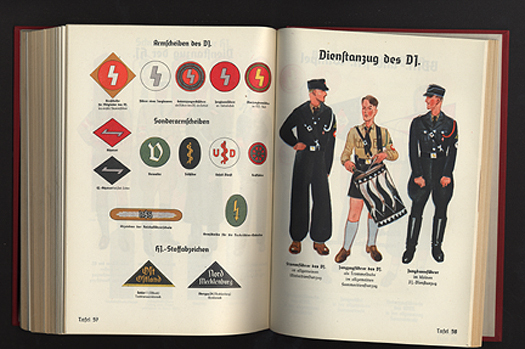 |
| The Nazi Party branding style guide |
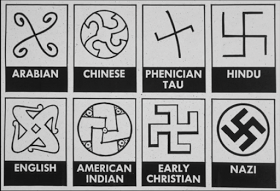 |
| Evolution of a symbol |
Advertising logos with the support of an ever-increasing swarm of media channels and direct pathways into our brains, are infused with meaning and aspirational associations. While political logos are supported by rhetoric-laden speeches and public relations photo ops, product logos are supported with radio jingles, attractive models, magazine ad copy, catalogs, websites and celebrity YouTube ads. On second thought, there’s almost no difference between a political campaign and a product campaign, since the politician is a product as much as a bag of chips.
I’ve designed a number of logos over the last decade and no one I worked for made any analogies between my work and witchcraft. However, everyone in the business accepts that these little brand signatures carry buckets of emotions that trigger reactions in the minds of audiences by way of a physic transference of ideas. The more subtle and sophisticated (occulted) the suggestion, the better.
 The Fed/Ex logo with its esoteric arrow hidden in plain sight is a prime example. Creating these sorts of suggestion images is no easy task and part of the reason why great designers are highly coveted and well paid by their corporate patrons.
The Fed/Ex logo with its esoteric arrow hidden in plain sight is a prime example. Creating these sorts of suggestion images is no easy task and part of the reason why great designers are highly coveted and well paid by their corporate patrons.
In ceremonial magick these brand logos are referred to as sigils. A sigil is a simplified visual abstraction of angels, demons, intentions, requests to the universe, or any number of other things that can be petitioned by way of these small icons. Nobody has presented the correlations between marketing and magick better than comic writer and magician, Grant Morrison.
“Corporate sigils are super-breeders. They attack unbranded imaginative space. They invade Red Square, they infest the cranky streets of Tibet, they etch themselves into hair-styles. They breed across clothing, turning people into advertising hoardings. They are a very powerful development in the history of sigil magic, which dates back to the first bison drawn on the first cave wall. The logo or brand, like any sigil, is a condensation, a compressed, symbolic summing up of the world of desire, which the corporation intends to represent. The logo is the only visible sign of the corporate intelligence seething behind it. Walt Disney died long ago but his sigil, that familiar, cartoonish signature, persists, carrying its own vast weight of meanings, associations, nostalgia and significance. People are born and grow up to become Disney executives, mouthing the jargon and the credo of a living corporate entity. Walt Disney the man is long dead and frozen (or so folk myth would have it) but Disney, the immense, invisible corporate egregore persists. Corporate entities are worth studying and can teach the observant magician much about what we really mean when we use the word “magic.” They and other ghosts like them rule our world of the early 21st century.” – Grant Morrison, POP MAGIC!
I have to say, in my limited geographical range, I’m the only person making ads with an interest and practice of ritual magic. It doesn’t mean they aren’t out there; I just don’t know them. I can pretty much assure you that rituals are not being preformed over corporate logos off in some secret boardroom. However, saying that doesn’t downplay the actual magical conjuring that goes into the creation of icons and their subsequent launching into the pop culture universe.
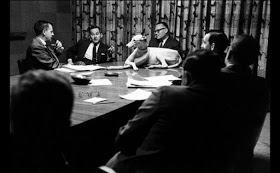 |
| Chamber of “secret” meetings |
In my own professional work, I’ve never been deliberate about placing any occulted messaging in it. On the other hand, I was always deliberately trained to be evocative, tap into the experiential emotions and memories of an audience and leave them with a strong directive for following up on whatever the proposition. If not overt magick, plenty of magical intention is exerted by the designer to evoke responses in the external world.
We often talk about planting a seed that becomes actionable in a decisive moment of consumer consideration. What usually sways a buyer from one brand to another is influenced in some degree by the magic of emotional persuasion that can be developed over time by continual grafting of associations onto the brand identity.
Of course all of this knowledge creates a level of internal discomfort for me. I was naïve when I first took on this career. I had an idealized vision of a cool and creative art director responsible for crafting beautiful design and photography while hanging out with all sorts of creative types. That part can be true to an extent. But there’s a clear trade-off when getting into bed with national or even global corporations.
Creatives have to be willing to be use their skills to craftily manipulate the public to believe a certain product has a superior benefit when in most cases their competition has an equivalent. It’s not something that’s palpable everyday but often enough to cause tension.
When various products all have the same ingredients or serve the same purposes, it’s known as product parity. In this mass consumer environment, packaging and messaging provide the essential magic to get over. A creative employee in the ranks of these companies has to either embrace their role as cleaver magician or buy into a narrative that what we do is just an honest form of creating informed consumers.
The market is a battlefield. Companies live and die in matches of throat-slitting competition. The ad (wo)men are a part of that war, enlisted in the PSYOP department. Brands don’t beat their competition without deploying a hard mind game.
An emerging tactic in the field is being touted as Neuromarketing. A self-styled guru of this marketing science, A.K. Pradeepof, goes all Deepak Chopra in his pitch made for this video.
Pradeepof claims roughly 95% of our decisions are made by the subconscious mind. The part of our brains most susceptible to programming and hypnotic suggestion. Perhaps ad execs have always known that to be the case but now with developing neuroscience they can seize on that data in new and aggressive ways.
“…the world’s largest and most sophisticated companies are applying the latest advances in neuroscience to create brands, products, package designs, marketing campaigns, store environments, and much more, that are designed to appeal directly and powerfully to our brains.” – A. K. Pradeep, The Buying Brain: Secrets for Selling to the Subconscious Mind
Predicting or anticipating motivations that led to purchasing behavior is a critical area of study within the marketing community. Now with digital behavioral data tracking as a mainstay in the telepathic marketing arsenal, there’s almost nothing that can’t be discovered about our personal beliefs, thoughts, desires and preferences. Everything important to our lives from business to personal goes into the Google memory bank. That data is tracked, studied and parsed for exploitation by men and machines.
If the mind can be accessed and mined for psychological drives and impulses, that access can be turned from observation to the elusive prize of influence. There’s nothing new about any of this save for the steroid enhancing powers of invasive digital realm tactics.
There’s absolutely nothing about nonconsensual invasions of privacy that appeals to me on a creative level. Cold analytics and invasive tracking are replacing what cleaver and sometimes-artful persuasion once achieved. My lack of enthusiasm over this industry sea-change reduces my value in the systematized ground game.
The more individuals are aware of the game at play, and I think they are increasingly so, the better situated they are to tuning out the barrage of invasive messaging that comes with our engagements in the digital space.
When symbols can be utilized for self-programing as opposed to leaving that interior space open for corporate squatting, personal magick can thwart the tactical sigils droned into our mental homes. My method is studying how symbols subconsciously work and developing rituals that aim at purifying my consciousness and boosting an awareness that brings me into more light. With that heightened illumination and receptivity, attempts against me through ad propaganda or media programing are very much diminished.
My continual interests in the creative tools of commercial art lie in the possibilities for subversion and redirection of them into fields of consciousness-raising via non-commercial expression. The techniques of the discipline are out there and increasingly accessible, which allows the public an opportunity to create personal propaganda.
The beauty of this digital media world is the availability of decentralized spaces and limitless storage capacity to counterbalance the visual and intellectual landscape and directly compete with the multi-nationals. Until our access to these platforms is revoked our stifled, they present channels for positive magick and a line of attack more sophisticated then ever before.
For the pollution I put out, my personal business will be to put equal efforts into subversion and passionate consciousness expansion. That is until the executive powers that be root me out for the malcontented fraud that I am. Until that day, I fall back on a perspective that isn’t fresh anymore but still very poignant from where I stand –
“Who controls what you see, controls what you think. But our reality is no longer based on what ‘they’ tell us. With the new media tools we all have at our disposal, all of us with the inclination to make our voices and opinions heard loudly, can now more fully participate in the debate. In a society where capital is king, and when every fucking dipshit with a dot com is making bank like they are printing cash in the cellar, and many of them are, the point should be to get as close to that AOL, Time-Warner, AT&T, CNN, CBS, ABC, NBC, RCA money as you possibly can get. If they will give, you should grab and not think twice. The truly up to date rabble-rouser wisely seeks the path of lest resistance and subverts from within. The multinational media corporations need people like us. To make their software, to write their articles and produce their television shows. Smell an opportunity for mischief? I do. The days of throwing Molotov cocktails and getting beaten up by cops (although Seattle did look like fun), is out. The days of living in a penthouse apartment, driving a Lexus and beating your enemies at their own game is in. Have your cake and throw it to in other words. Don’t complain about the media. Become the media. Ladies and gentlemen, I have seen the Illuminati and it is us.” – Richard Metzger, speech given at Disinformation Con




Comments are closed.